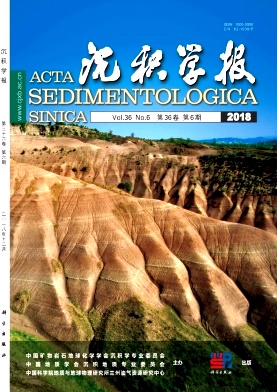Characteristics and Genesis of Dolomite Reservoirs in the Yingshan Formation of Well SN501 in the Tarim Basin
doi: 10.14027/j.issn.1000-0550.2018.092
- Received Date: 2017-10-18
- Rev Recd Date: 2017-12-28
- Publish Date: 2018-12-10
-
Key words:
- fluorite /
- dolomite /
- dolomite reservoir /
- Yingshan Formation /
- Tarim Basin
Abstract: Several wells drilled in the Shunnan area of the Tarim Basin revealed the enrichment and accumulation of natural gas in the dolomite reservoirs, but the genesis of those reservoirs is still controversial. Dolomite reservoirs cored from the lower Yingshan Formation in Well SN501 open a window to understanding the genesis of dolomite reservoirs in this area. Detailed core investigation, micropetrography, diagenesis event sequence, pore image analysis of casting thin section, computed tomography, backscattered imaging, and trace element Fe/Mn quantification of electron probes and fluid inclusions were carried out to study the characteristics and genesis of the dolomite reservoirs. The dolomite reservoir is the fracture-pores type, and the main reservoir space consists of intercrystalline pores and solution pores together with fractures and expansion fractures. There is a positive correlation between the occurrence of pores and fractures. Fluorite and calcite, as symbiotic hydrothermal minerals, filled in fractures and pores. The dolomites, dolomite ring edge, and calcite coexisted with fluorite near fractures, and pores show high contents of FeO and MnO. Groups of colorless transparent fluid inclusions in fluorites have 165℃-175℃ of homogenization and 15.5-17.5 wt.%NaCl salinity equivalent. Hydrothermal fluid activities should result in the enrichment of Fe2+ and Mn2+ in calcites and dolomites within the surrounding rock, and at the same time, provide the F- needed for fluorite crystallization. On the one hand, hydrothermal fluid reconstructs the dolomite to form the reservoir. On the other hand, the hydrothermal minerals acting as cements, represented by the fluorites and calcites, filled in fractures and pores. Thus, the generation of dolomite reservoir spaces should be related to tectonic-hydrothermal fluid activity. This understanding of the dolomite reservoir in well SN501 is of great significance to the establishment of a dolomite reservoir formation model and further exploration in this area.
| Citation: | YOU DongHua, HAN Jun, HU WenXuan, CHEN QiangLu, CAO ZiCheng, XI BinBin, LU ZiYe. Characteristics and Genesis of Dolomite Reservoirs in the Yingshan Formation of Well SN501 in the Tarim Basin[J]. Acta Sedimentologica Sinica, 2018, 36(6): 1206-1217. doi: 10.14027/j.issn.1000-0550.2018.092 |






 DownLoad:
DownLoad: